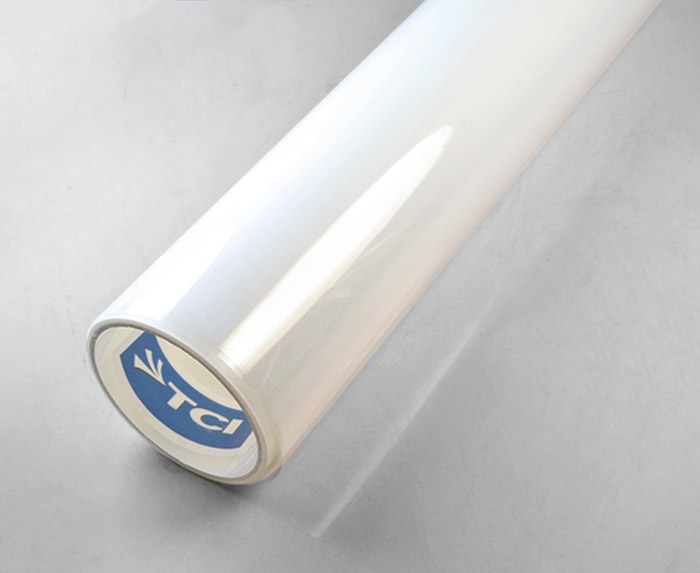Superior chemical resistance to most acids and solvents over a broad temperature range and low permeability to solvents and gases make ECTFE films the choice materials for chemical tank linings, pump diaphragms, chlorine cells, water treatment, spray shielding applications for pipe joints, and semiconductor processing environments.
ECTFE Films

TCI produces our ECTFE films/foils from HALAR® Ethylene-ChloroTrifluoroEthylene resins using a melt extrusion casting process. Like other fluoropolymer films, ECTFE is resistant to harsh thermal, chemical, and ultraviolet environments. TCI’s ECTFE films offer excellent weatherability, UV radiation resistance, chemical abrasion resistance, tear resistance, non-stick properties, and resistance to high-energy radiation.
ECTFE films have the highest abrasion and tear resistance, as well as the highest dielectric strength, of all fluoropolymer films. ECTFE is chemically inert. These films have excellent fire resistance, with a UL V-0 rating, and low friction properties.
ECTFE films can be heat-sealed, thermoformed, and laminated to various substrates. ECTFE performs in continuous service temperatures ranging from -328°F (-200°C) up to 330°F (165°C). TCI offers ECTFE in thicknesses ranging from 0.0005" to 0.010" (12 to 250 mμ). TCI’s ECTFE foils come in a standard width up to 60” (1,524 mm), with slit widths available upon request. Bondable (chemically etched) surfaces are available.
Related Applications
ECTFE films are effective for outdoor protective applications due to its excellent weatherability, non-stick properties, U-V stability, abrasion resistance, tear resistance, and high light transmission.
TCI's ECTFE films offer excellent dielectric performance, superior water vapor barrier properties, fire resistance, and high solar transmittance, making them ideally suited for use in the back sheet and front sheet glazing of PV panels. They are used extensively as a back sheet external material for protecting the PV Module from the external environment for an extended period of time.

